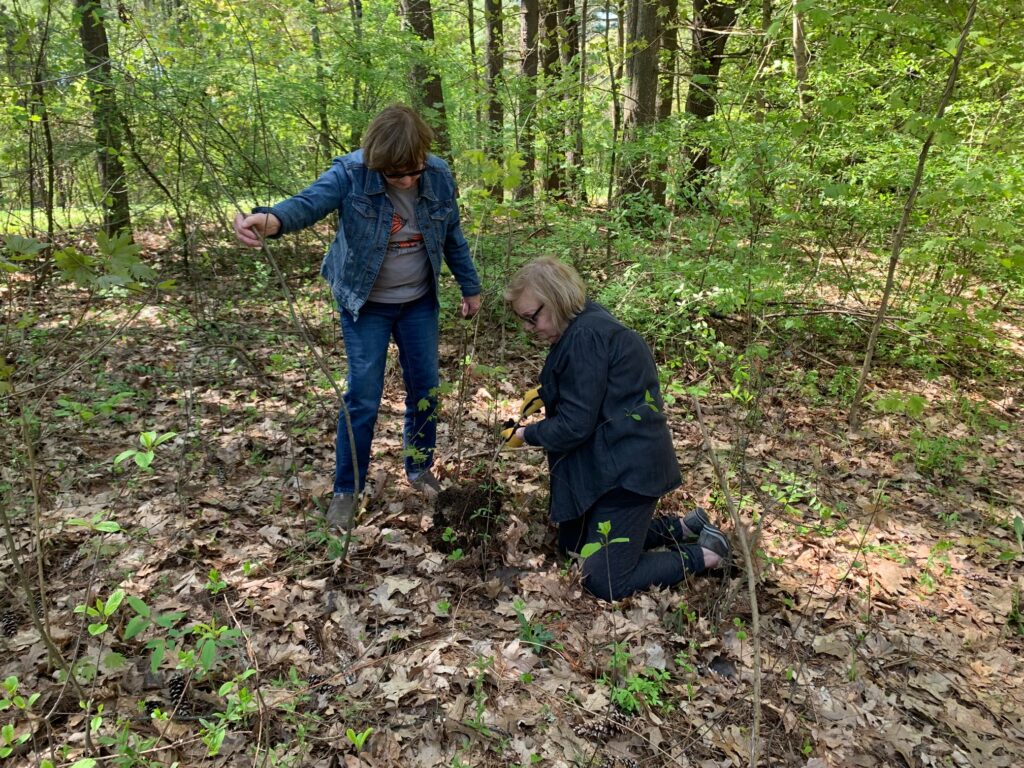Save Crandall Park from Invasive Species

Plant diversity is essential for the growth and sustainability of every park… However, today over half of the parks in America are being threatened by invasive species. If left untreated, these invasive species will have detrimental consequences on the surrounding ecosystem. As a result, some people have started to take action against these harmful species.
The Crandall Park Beautification Committee’s ongoing project is a standout example of how a community of people are working to protect this diversity. They’re approaching the issue head-on, removing these invasive species from the park. The two most dominant invasive species in Crandall park are burning bush (euonymus elatus) and Oriental bittersweet (celastrus orbiculatus). While these species are commonly found, very few people understand exactly what they are, and more importantly, the damage they are doing to the park.
Earning its name from the bright red color of the leaves in the fall, burning bush looks beautiful to the human eye; so much so that it is extremely common to find in suburban landscapes. However, while it grows the plant creates many complex root systems and dense thickets. It can grow to become over six feet tall. Additionally, the plant produces an abundance of seeds, can self-fertilize, and has no known predators. As a result, other plants have a hard time surviving where burning bush is present and plant diversity decreases immensely.
Unlike burning bush, Oriental bittersweet doesn’t affect other plants’ ability to grow, but it harms the plants that are already present. Oriental bittersweet is a vine that grows along tree trunks. It can be recognized by the fruit it produces which are green in the summer, but turn bright orange in the late fall. It is surrounded by small oval-shaped leaves that become gold in the fall, but are a glassy green in the spring and summer. Many animals like birds eat the fruit of Oriental bittersweet once it’s exposed in the fall and this carries the seeds across large distances, allowing it to reproduce.
The issue is that as the species grows, the vines smother the trees and shrubs it comes in contact with, strangling them. While these plants may look nice or seem harmless, if left untouched they could take over the entire park.
To combat the issue of invasive species, this past fall, the Crandall Park Beautification Committee formed a plan for their elimination. Using arcGIS, a software program designed to display geographical data, members of the committee and community went into the park and tracked the locations of these invasive species. This helped map out specific areas throughout the park in which each of the invasive species are most prevalent. Using the data from this research, with the help of the Warren County Soil and Water Conservation District, the committee made a plan for the species’ removal.
Volunteers have the opportunity to help remove invasive species June 3rd to the 7th from 10:00 AM to 2:00 PM. Everyone will meet at the pollinator garden, and are encouraged to bring gardening gloves and a small garden hoe. Specialists from Warren County Soil and Water Conservation District will provide more specific instructions to all volunteers.

Some may think that an invasive species eradication is unnecessary, but that couldn’t be farther from the truth. In America, over half of all parks are being threatened by invasive species that will result in substantial consequences if left untreated. The Crandall Park Beautification Committee is a dedicated group of community members and volunteers that devote a remarkable amount of time to improving their local park for everyone. It’s people like them that are helping to keep parks open and safe, so everyone can enjoy the diverse ecosystems.
If you have the time, please consider giving a few hours of your time to help support the committee’s efforts and maybe even start your own movement at your local park. As Jim Liebrum, manager of the Warren County Soil and Water Conservation District says, “Look for small victories to make big changes.”